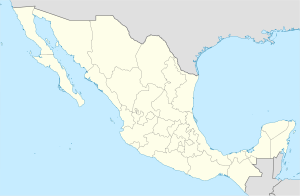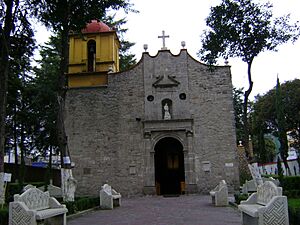Santa María Natívitas facts for kids
Quick facts for kids
Santa María Nativitas
|
|
|---|---|
|
Municipality and town
|
|
| Country | |
| State | Oaxaca |
| Time zone | UTC-6 (Central Standard Time) |
| • Summer (DST) | UTC-5 (Central Daylight Time) |
Santa María Nativitas is a small town and a municipality in the state of Oaxaca, located in south-western Mexico. It is part of the Coixtlahuaca district, which is found within the larger Mixteca Region. In 2005, the municipality had a total population of [population number, if available, otherwise omit or state 'a small population'].
Contents
About Santa María Nativitas
Santa María Nativitas is a quiet place in Mexico. It's known as both a town and a municipality. Think of a municipality like a local government area, similar to a county or a borough in other countries. It includes the main town and the smaller villages or areas around it.
Where is Santa María Nativitas?
This town is located in the state of Oaxaca. Oaxaca is one of Mexico's 32 states, famous for its rich culture, beautiful crafts, and delicious food. Santa María Nativitas is in the south-western part of Oaxaca.
It belongs to the Coixtlahuaca district. Districts are like smaller divisions within a state, helping to organize different areas. This district is part of the Mixteca Region. The Mixteca Region is a large area that covers parts of several Mexican states, including Oaxaca. It's known for its unique history and the Mixtec people who have lived there for a very long time.
What is a Municipality?
In Mexico, a municipality is a very important part of how the country is organized. It's the smallest unit of government. Each municipality has its own local government, led by a mayor or municipal president. This government helps manage things like local services, roads, and community projects for the people living in the town and nearby areas.
Life in Santa María Nativitas
While specific details about daily life in Santa María Nativitas are not widely available, towns in the Mixteca Region often have strong community ties. Many people work in farming, growing crops like corn and beans. Local markets are important places for people to buy and sell goods, and traditional festivals are often celebrated throughout the year. The church, like the one shown in the picture, is usually a central part of the community.



